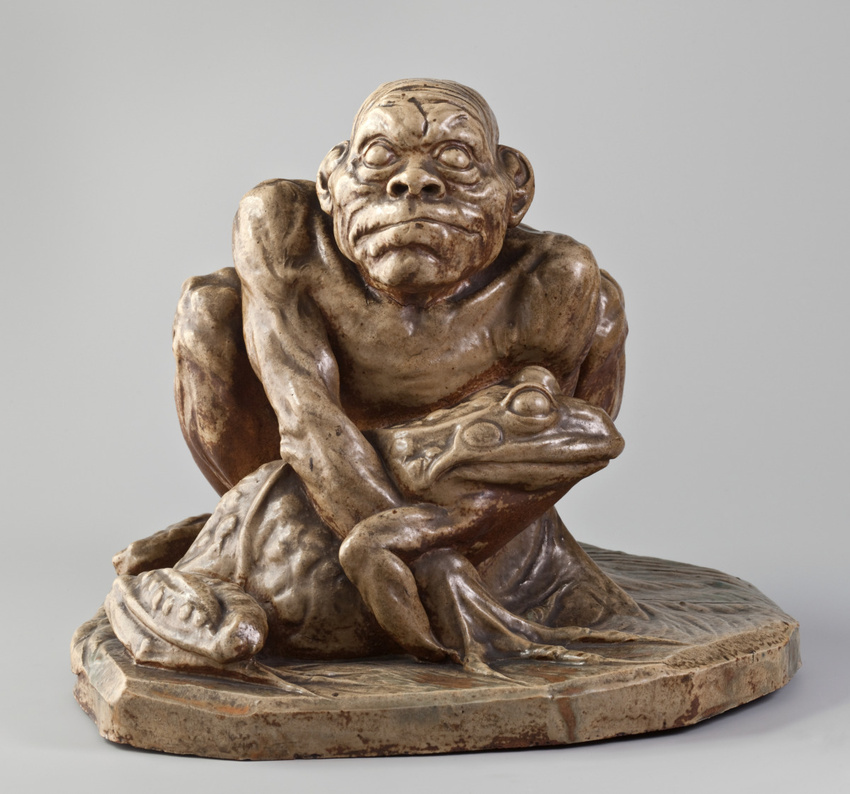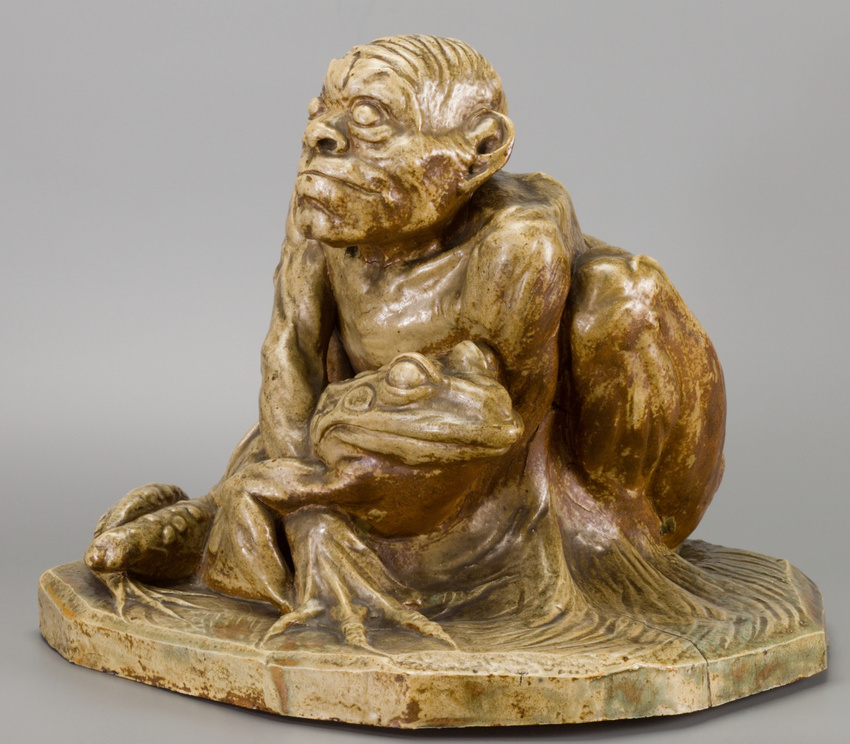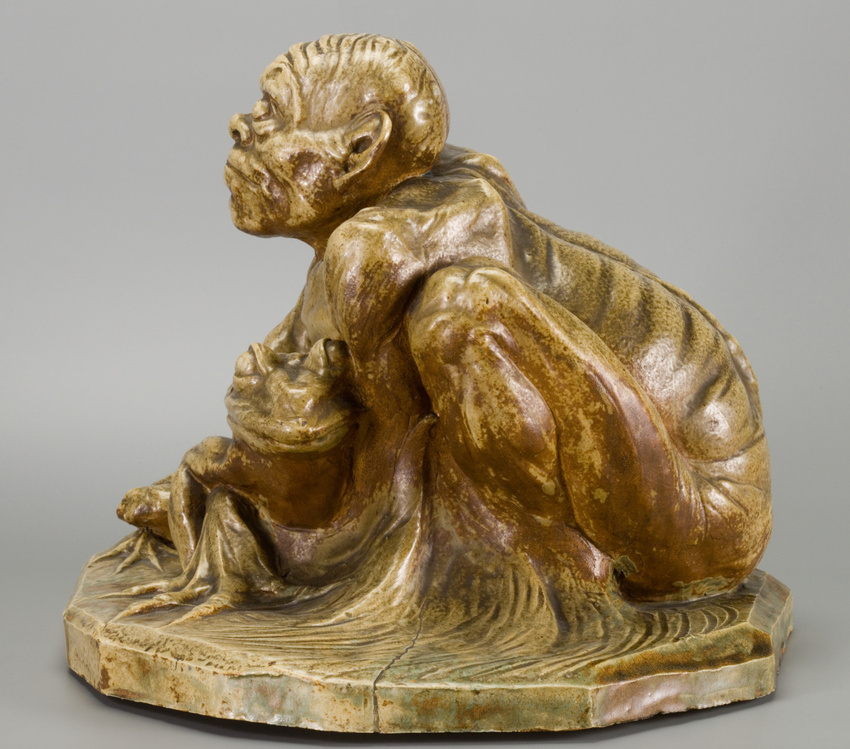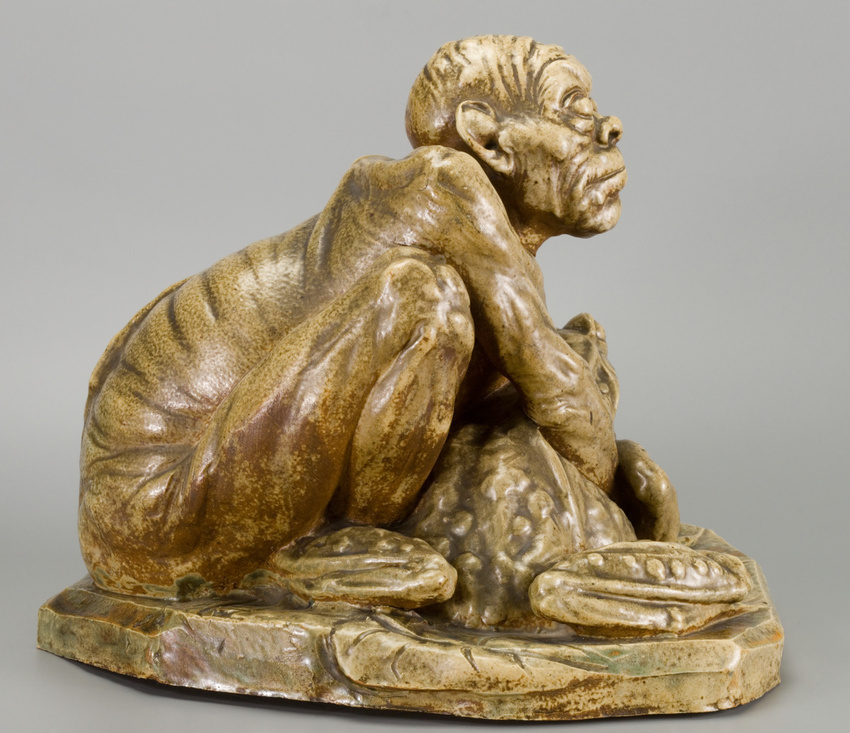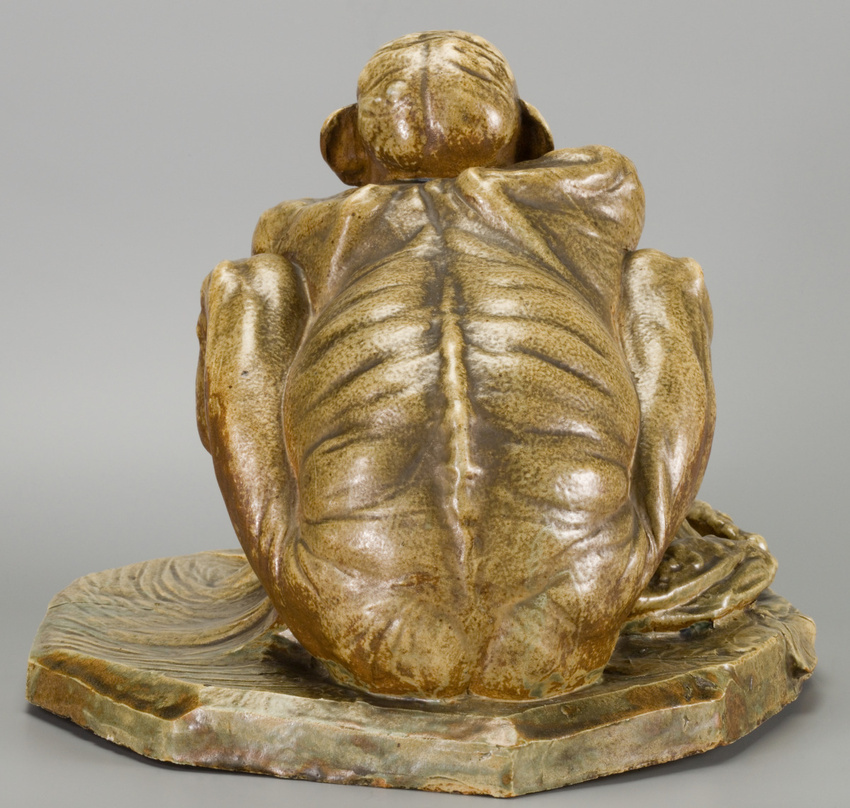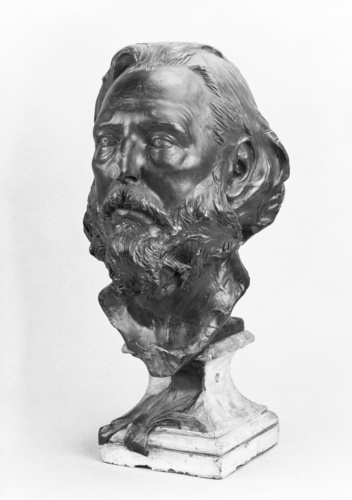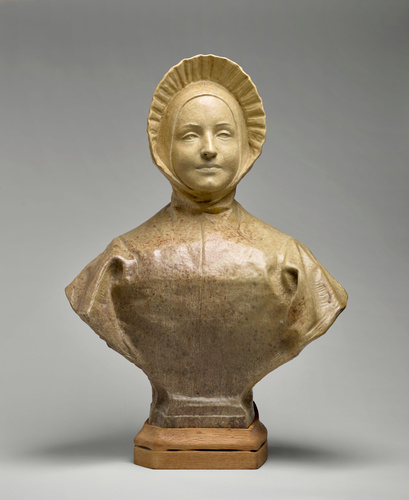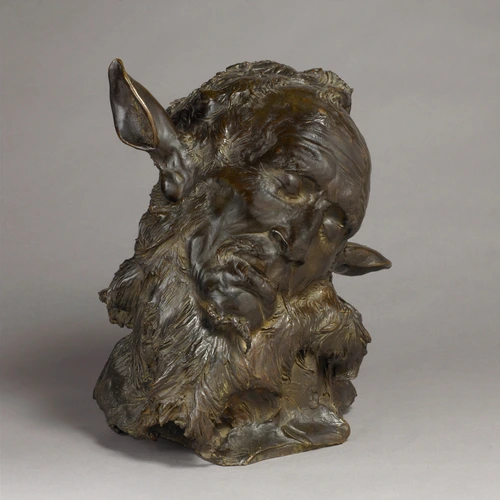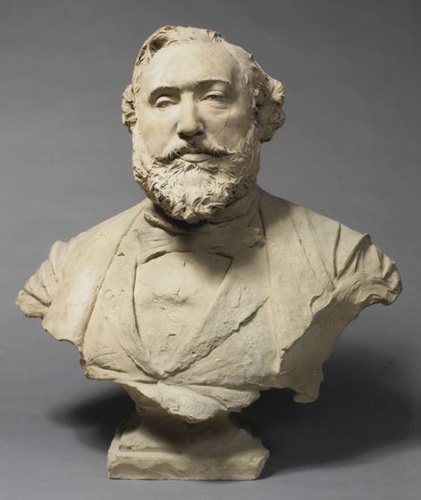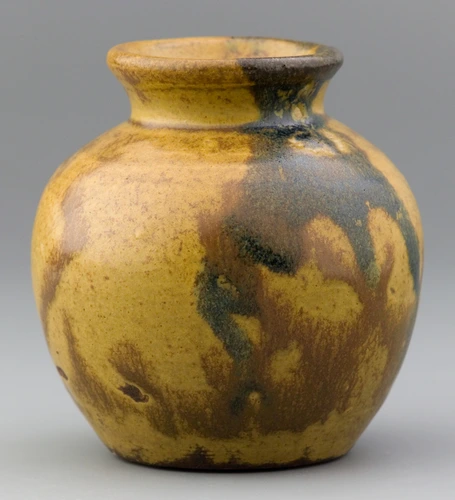Le Grenouillard
At the end of the 1880s, Carriès began to produce sculptures in stoneware. Essentially he repeated some of his previous works and initial studies made for a monumental door commissioned by the princess of Scey-Montbéliard, the future princess Edmond de Polignac. Carriès produced just four stoneware models that were original designs and not part of the door, one of which was this Frog-Man.
These ceramic works form a thematically and formally coherent group. Frogs, amphibians with human faces, and monsters with frog-like faces appear on some of the door panels.
At the end of the 19th century, the theme of frogs and toads was very popular with ceramicists and collectors, who were certainly attracted by the strangeness of these figures. For Carriès, this trend reflected his own deep fascination with the subject. In 1897, Octave Uzanne, a man of letters, recalled a walk he and the sculptor took one night in 1882 in Paris: "A toad from the banks of the Seine was hopping around our feet [...] Carriès caught it immediately [...] and stroked it lightly with his finger. You could see the admiration in his eyes". Ten years later, the animal had been transformed into a monstrous creature.
The Frog-Man was almost certainly the result of the feverish nights the sculptor experienced whilst suffering from pleurisy - a disease which would eventually kill him in 1894 - and the worry and anxiety that the work on the door was causing him. The fact that he took morphine must also have contributed to this vision.
Comparable to the "horror masks" of the door in its frightening and grotesque appearance, the Frog-Man also emanates the same poetry and mystery of stagnant waters and deep mud, born out of an imaginative consciousness that has its place in the oneiric strand of Symbolism. It also recalls the stone gargoyles perched on cathedrals. Finally, it is worth noting that the Frog-Man shares some of the physical characteristics of the kappa - a monster from Japanese folklore with the shell of a tortoise and the feet of a frog - although we cannot be sure that this was the source of Carriès' inspiration.
